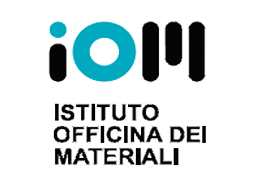Formation and Etching of the Insulating Sr-Rich V5+ Phase at the Metallic SrVO3 Surface Revealed by operando XAS Spectroscopy Characterizations
Perovskite transition metal oxide thin films exhibit a wide range of functional properties that make them promising candidates for electronic devices. In their transparent conductive oxide (TCO) form, they possess a unique combination of high electrical conductivity and visible-range optical transparency. Among the TCOs, SrVO3 (SVO) has gained significant attention due to its electrical and optical properties comparable to the most commonly used indium-tin-oxide (ITO), which suffers from high costs due to the scarcity of indium. However, SVO is prone to surface chemical degradation over time, which poses a significant challenge. This degradation leads to the segregation of Sr towards the surface and the over-oxidization of V, resulting in the formation of a thin insulating layer at the TCO surface. A full understanding and control of these issues are needed to overcome its use in large-scale technology.
In this framework, authors deposited by pulsed laser deposition (PLD) technique polycrystalline SVO film of some tens of nm on top of a Si substrate, ideal for further industrial transfer. To simulate the ageing process, they subjected the SVO films to ex situ annealing treatments in air at 200°C - a well-established procedure in NFFA research group, showed in another research study (https://doi.org/10.1021/acsami.3c02421). Subsequently, they performed spectroscopic measurements using x-ray photoemission and x-ray absorption techniques under ultra-high vacuum conditions to characterize the samples. The analysis revealed the presence of a thin Sr-rich surface layer resulting from the ageing process, which was attributed to the formation of Sr2V2O7 and/or Sr3V2O8 compounds.
To mitigate the surface degradation, a cleaning process using water at ambient pressure was employed, with water both in its vapor and liquid forms. As expected, they found that liquid water was significantly more effective and faster in removing the undesired layer compared to water vapor. To gain further insights into the cleaning dynamics, operando x-ray absorption measurements at ambient pressure were performed. This allowed to follow the V-L2,3 edges evolutions upon exposure to a continuous stream of water vapor (Figure 1).

The cleaning is here definitively associated to an etching of the 3 nm thick Sr-rich V5+ surface state, as attested by additional x-ray reflectivity measurements (Figure 1).
Having achieved a clean and stoichiometric SVO surface, the effects of annealing treatments in different atmospheres were investigated, including reducing and oxidizing environments, to reproduce the initial state. By carefully controlling the annealing conditions, the research team gained a better understanding of the thermodynamic surface instabilities of perovskite TCOs and the factors influencing their degradation.
Overall, this study contributes to the advancement of knowledge in the field of perovskite TCOs, specifically focusing on SVO, and provides valuable insights for the future utilization of vanadium-based TCOs in large-scale technology. By addressing the challenges associated with surface degradation and establishing efficient cleaning methods, we bring closer the realization of low-cost oxide electronics and the widespread implementation of vanadium-based TCO materials.





